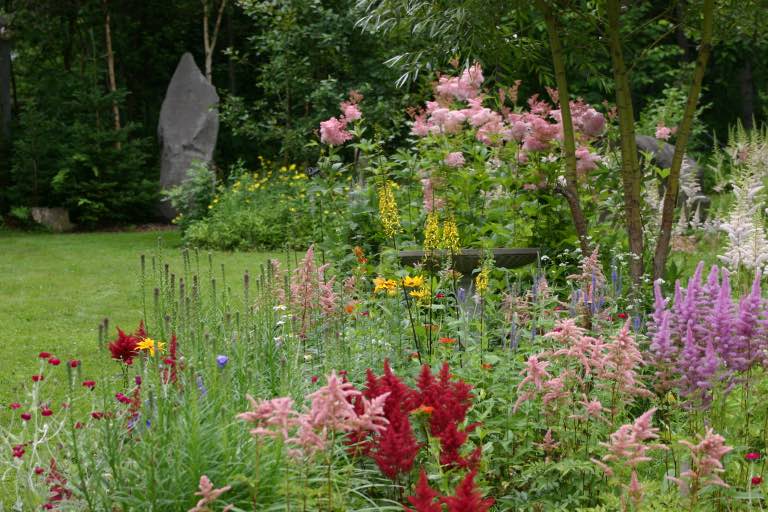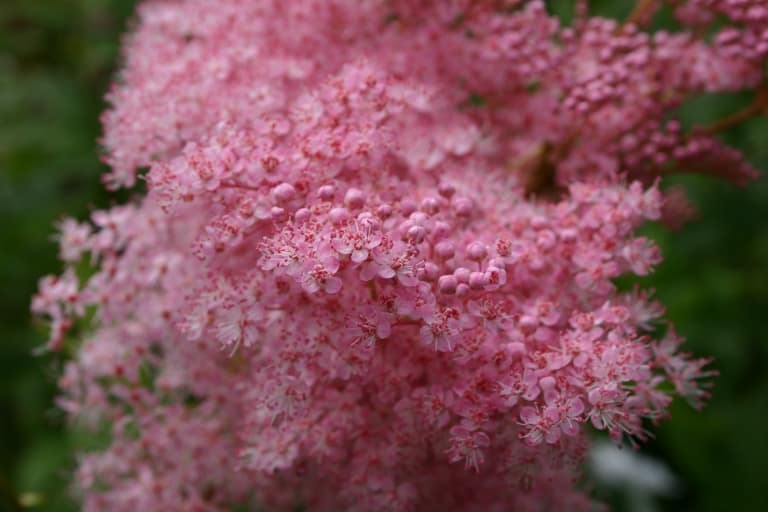Queen Of The Prairie: The Perfect Companion Plants To Make Your Garden Sing
Queen of the Prairie: The Perfect Companion Plants to Make Your Garden Sing
Introduction
The tallgrass prairie is a beautiful and diverse ecosystem that is home to a wide variety of plants and animals. One of the most iconic plants of the prairie is the queen of the prairie, or Filipendula rubra. This tall, showy perennial is a favorite of gardeners for its lush foliage, delicate pink flowers, and long blooming season.
If you're thinking about adding queen of the prairie to your garden, you'll want to choose the right companion plants. The right companions will help to accentuate the queen of the prairie's beauty, attract pollinators, and deter pests.
In this blog post, we'll discuss the perfect companion plants for queen of the prairie. We'll also provide some tips for planting and caring for these beautiful plants.
Main Content
Companion Plants for Queen of the Prairie
When choosing companion plants for queen of the prairie, there are a few things to keep in mind. First, you'll want to choose plants that have similar growing conditions. Queen of the prairie prefers full sun and well-drained soil. It's also a tall plant, so you'll want to choose companions that won't be overshadowed.
Here are some of the best companion plants for queen of the prairie:
- Black-eyed Susans (Rudbeckia hirta) are tall, daisy-like flowers that bloom in the summer. They attract butterflies and other pollinators, and they help to deter deer.

- Goldenrod (Solidago spp.) is another tall, summer-blooming flower that attracts pollinators. It's also a good choice for attracting beneficial insects, such as ladybugs and lacewings.
- Coneflowers (Echinacea spp.) are hardy perennials that bloom in the summer. They attract butterflies, bees, and other pollinators. Coneflowers are also deer-resistant.
- Asters (Aster spp.) are a diverse group of plants that bloom in the fall. They attract a variety of pollinators, and they help to extend the blooming season in your garden.
- Yarrow (Achillea millefolium) is a low-growing perennial that blooms in the summer. It's a good choice for filling in the spaces around queen of the prairie. Yarrow is also a medicinal herb that has been used for centuries to treat wounds and infections.

Planting and Care
Queen of the prairie is a relatively easy plant to grow. It's best to plant it in the spring or fall. Choose a sunny spot with well-drained soil. Queen of the prairie is drought-tolerant, but it will appreciate regular watering during the summer months.
To help prevent diseases, it's a good idea to deadhead the flowers after they've bloomed. You can also cut the plant back in the fall to help it prepare for winter.
Conclusion
With the right companion plants, queen of the prairie can be a stunning addition to your garden. These beautiful plants will attract pollinators, deter pests, and help to extend the blooming season.
Queen of the prairie is a beautiful and majestic plant that can add a touch of elegance to any garden. But did you know that it's also a great companion plant? When paired with the right plants, queen of the prairie can help to create a stunning and pollinator-friendly landscape.
Here are a few of the best companion plants for queen of the prairie:
- Spider flower: This bright orange flower blooms in late summer and fall, and it's a great way to add some color to your garden.
- Purple coneflower: This tall and stately flower is a classic choice for prairie gardens, and it's a favorite of pollinators.
- Black-eyed Susan: This cheerful yellow flower is another pollinator favorite, and it blooms from late summer to fall.
- Bee balm: This fragrant herb is a great way to attract bees and butterflies to your garden.
- Salvia: This colorful genus of plants includes many varieties that are well-suited for prairie gardens.
For more information about queen of the prairie companion plants, I recommend visiting Garden Wiki. This website has a wealth of information about this beautiful plant, including a list of the best companion plants to grow with it.
FAQ of queen of the prairie companion plants
Q: What are some good companion plants for queen of the prairie?
A: Queen of the prairie (Filipendula rubra) is a tall, showy wildflower that is native to North America. It prefers full sun and moist, well-drained soil. Some good companion plants for queen of the prairie include:
- Butterfly weed (Asclepias tuberosa): This plant attracts butterflies and other pollinators.
- Bluebells (Campanula rotundifolia): This plant blooms in the spring and has blue, bell-shaped flowers.
- Coneflower (Echinacea purpurea): This plant is also a good attractor of butterflies and other pollinators.
- Black-eyed Susan (Rudbeckia hirta): This plant has yellow flowers with dark brown centers.
- Goldenrod (Solidago spp.): This plant blooms in the fall and has bright yellow flowers.
Q: What are the benefits of companion planting with queen of the prairie?
A: Companion planting is the practice of planting different types of plants together to benefit each other. There are several benefits to companion planting with queen of the prairie, including:
- Increased pollination: Companion plants can attract pollinators, which help to pollinate queen of the prairie flowers. This can lead to increased seed production.
- Improved pest control: Some companion plants can help to repel pests that attack queen of the prairie. For example, butterfly weed is a host plant for monarch butterflies, which help to control aphids.
- Improved soil health: Companion plants can help to improve soil health by adding nutrients and organic matter. This can benefit queen of the prairie by providing it with the nutrients it needs to thrive.
- Increased diversity: Companion planting can help to increase the diversity of plants in a garden. This can make the garden more attractive to wildlife and can help to reduce the risk of pests and diseases.
Q: How far apart should queen of the prairie companion plants be planted?
A: The spacing of queen of the prairie companion plants will depend on the size of the plants. In general, queen of the prairie should be spaced about 2-3 feet apart. However, some companion plants, such as butterfly weed, can be planted closer together.
Q: When should I plant queen of the prairie companion plants?
A: Queen of the prairie companion plants can be planted in the spring or fall. However, spring is the best time to plant them, as they will have more time to establish themselves before winter.
Q: How do I care for queen of the prairie companion plants?
A: Queen of the prairie companion plants are relatively easy to care for. They need full sun and moist, well-drained soil. They should be watered regularly during the first year after planting. Once they are established, they are drought-tolerant.
Image of queen of the prairie companion plants
- Astilbe is a tall, airy plant with delicate pink or white flowers. It blooms in mid-summer and is a great companion for queen of the prairie because it likes similar growing conditions.

- Liatris is a spiky, lavender-colored plant that blooms in late summer. It's a great way to add height and texture to your garden, and it's also a good nectar source for butterflies.

- Echinacea is a daisy-like plant with bright orange or yellow flowers. It blooms in mid-summer and is a popular choice for medicinal gardens. It's also a great companion for queen of the prairie because it attracts beneficial insects.

- Rudbeckia is a daisy-like plant with bright yellow or orange flowers. It blooms in late summer and is a great way to add color to your garden. It's also a good nectar source for butterflies.

- Bee balm is a tall, bushy plant with fragrant purple flowers. It blooms in mid-summer and is a great way to attract pollinators to your garden. It's also a good companion for queen of the prairie because it likes similar growing conditions.
Post a Comment for "Queen Of The Prairie: The Perfect Companion Plants To Make Your Garden Sing"